What I Learned About Online Video at Wistiafest 2014
I just got back home last night from Boston after attending Wistiafest, an online video conference hosted by Wistia, the awesome company we use to host all our private videos over at Fizzle.co and what I use to host the videos in the DIY Video Guide.
First off, they put on an incredibly smooth event for the inaugural running. With over 200 people in attendance, everything was on track with plenty of fun surprises thrown-in (more on that in a minute). So I want to say "job well done" to Chris, Brendan, Kristen, and the other twenty plus Wistians for really making an awesome week.
Alright, enough intro.
One of the biggest problems with attending most conferences is that sometimes you can't really take home much of what you heard or did (except for perhaps hangovers and some new friends on Twitter).
So my goal with this is to not only share with you what I learned if you weren't there, but also to help me better retain what I learned. I'll break down each of the main stage talks, the panel I was on, the roundtable lunch discussion I led, and the three workshops I attended.
Let's get started.
Main Stage Talks
There were seven main talks on the first full day of Wistiafest, but I'm not going to completely rehash everyone of them. Instead, I'm going to share my biggest takeaways from a few of them and you can check out the slides of some on Slideshare or wait for the recordings to come out later.
And definitely watch the intro videos they made for every presenter. They cracked me up.
Chris Savage, CEO & Co-founder of Wistia
Chris kicked it off right. He shared a bunch of never before public stats about the growth of Wistia (which you can check out here).
He also shared a lot of examples of people doing video right. My favorite was this simple, yet charming video from Zendesk.
Phil Nottingham, Video SEO at Distilled
"Video Content to Video Strategy" on Slideshare
Here are my takeaways from Phil's presentation.
- The first time on video is always awkward.
- Online video is not the same as online TV.
- All videos you make should be valuable, and then placed on the platform (e.g. YouTube, Wistia, etc.) that they are made for.
- Content isn't King, Context is.
- Videos have three main purposes: Conversion, Brand Awareness, & Consideration/Advocacy.
- You want your video to rank via SEO for a page on your site, not a YouTube page where they won't convert from.
- Create transcripts of your videos (or use the script you wrote) and include that in the HTML of the page you have it embedded. It helps user experience and SEO.
- Create a video sitemap.
- On YouTube, make sure to utilize annotations, good thumbnails, and make playlists.
- Consistent Quality Publishing > Consistent Publishing Schedule
- The average click-through rate to a website on 95 YouTube channels he studied was less than 1%.
I'm going to mention two videos that Phil showed specifically. The first is a video you'd see after unsubscribing from Hubspot's email newsletter. Makes me want to do one at Fizzle.
And the next is a love story between A-1 Steak Sauce and Steak. Yes, you read that correctly. It may make you cry. Or at least laugh.
Rand Fishkin, Co-founder of Moz
"How Moz Does Video" on Slideshare
Rand and Moz do a fairly popular recurring video series on their site called Whiteboard Friday. In his presentation (on Slideshare above) he opened the kimono to a lot of the stats behind them. For example, the most popular episodes are only 4-6x as popular as the most popular ones, so consistency is what matters for them, not "going viral".
He also talked about how each of their videos are made to help in a very specific way. They breakdown complex topics in a single video, trying not to cover too much at once. This way people can digest it, have an action to go do, and not be overwhelmed.
Rand discussed how the point of Whiteboard Fridays isn't to gain more customers. (In fact, he said they only mention their software in 10% of the videos.) The point of them is to help their existing audience and customers. Video is for helping.
He then compared the first Whiteboard Friday they made back in 2007 to the ones they make now. Everyone starts somewhere.
Other talks included Brendan Schwartz, CTO & Co-founder of Wistia, detailed some new features that are coming soon to their platform, Mackenzie Fogelson of Mack Web Solutions shared the strategy they used to launch a series of videos to get email subscribers & readers of their guide, Heidi McKye from Stillmotion presented on how to tell a good story with video, and Matthew Sweezey from Salesforce & Pardot shared how to build influence with great experiences.
It was a great line-up.
Our Panel on "Teaching with Video"
On the same day as all of the talks I had the pleasure of being on a panel with Ben McCormack from Trello, Aneri Shah of Skillfeed by Shutterstock, and Justine Jordan of Litmus. Our M.C., Alyce Currier from Wistia, did a great job with the questions and we covered a lot of considerations with teaching on video.
- How long should teaching videos be? The shorter the better. 2 to 5 minutes is a sweet spot.
- How do you make sure the audience retains the information? Make them take an action, like fill out a worksheet or form.
- What can you do during or before the shoot to make editing easier? Script it, plan for what b-roll you need, and give your future self notes while recording.
When/if the recording of our panel becomes available, I'll post it here too.
My Lunch Table Discussion
I also had the pleasure of leading a roundtable discussion at lunch one day too. The topic was: "Video vs. Audio vs. Written: Which format should something be in?"
The main takeaway from it was that it really depends on a few factors.
- Where is your audience hanging out? e.g. Blogs, YouTube, iTunes.
- What is the best way to deliver the content? Videos works best for teaching most visual things.
- What do you have the time to produce? Time to make video > audio > written.
Thanks to everyone at my table for sharing their insight!
Workshops I Attended
On the last day there were three time slots for workshops. I signed up and attended the below workshops, but really wanted to sit in on all of them! I'll share some of my notes, thoughts, and takeaways from each.
Consistent Content Strategy with Ezra & Alyce
This session centered around the importance of having a consistent content strategy, which is one of my main jobs over at Fizzle.co. I really enjoyed seeing how Wistia has a four week process for creating their content and how it keeps them on track month in and month out.
One big takeaway from this chat was publishing content on your blog from your team and promoting it on social, but not necessarily to your email list works really well for sharing company culture while still having a consistent (and not overwhelming) output to your broader audience.
Video SEO with Phil & Ben
From this session I learned a ton about how video sitemaps work, how "rich snippets" (meaning thumbnails from your videos) impacts your search rankings, and why you would host videos on your site with Wistia vs. just having them publicly on YouTube.
Definitely check out this page on Wistia or this one on Distilled to find out more about how video SEO works.
YouTube Strategy with Ezra & Phil
The third session I went to talked a bunch about how to create presence on YouTube, what you should do on your channel (create a trailer, set-up playlists, use tags, use annotations, etc.), and what metrics to actually care about (engagement, not views).
This was really timely as I'm working up our upcoming YouTube strategy for our Fizzle channel after sunsetting our larger Think Traffic channel.
DIY Video Studio Set-up with Chris Lavinge
I missed the official workshop with the behind the scenes look at the Wistia studio, but I asked Chris afterwards for a quick tour and he was kind enough to give me one.
It made me want to rent a garage near me just so I could have a dedicated space to leave all my video equipment up, since that is always a big barrier to making more videos.
If you haven't checked out their video on how you can set up your own video studio, definitely check that out. They have one of the best and simplest setups out there.
Wistiafest 2014 was full of oysters, dunk tanks, video knowledge bombs, food trucks, kegs of beer, and a ton of awesome people.
It was a fun event, put on by one of my favorite companies.
If you weren't there this time or you were and I didn't meet you, hopefully I'll see you at the next Wistiafest!
Cheers,
Caleb Wojcik










